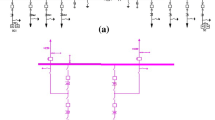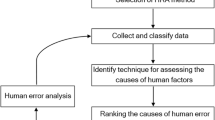Abstract
This paper describes how proper maintenance personnel planning could influence the productivity of the maintenance process in transmission power grids. Improving productivity has the effect of reducing maintenance costs and consequently increasing the profits of maintenance companies. The expansion of electricity utilization in recent years has made the need for sustainability and the quality of the energy supply increasingly clear. In this regard, power companies continuously maintain and repair the power grid to provide customers with continuous, high-quality electricity. However, if a human error occurs during maintenance operations, the supply of energy may be interrupted. The main results of a case study conducted at an electrical maintenance company show that human error increased maintenance costs by at least about $ 1.13 million in 2019. Therefore, the purpose of this article is to provide a simple and understandable communication model between human reliability and maintenance costs. With the proposed mathematical model, the number of maintenance costs can be estimated using the mathematical expectation law. With this method, managers can easily identify departments and teams that increase costs along with unspecialized personnel. Finally, it is illustrated that excess maintenance costs can be eliminated with proper management.



Similar content being viewed by others
References
Mesić M, Plavšić T (2013) The contribution of failure analyses to transmission network maintenance preferentials. Eng Fail Anal 35:262–271
Alsyouf I (2007) The role of maintenance in improving companies’ productivity and profitability. Int J Prod Econ 15:70–78
Shao1 J, Qiao1 Q et al. (2019). Operation and Maintenance Costs Allocation Model of Grid Project Based on Performance Value. IEEE 3rd Information Technology,Networking,Electronic and Automation Control Conference, Chengdu, China.
Pavic I, Holjevac N et al. (2015). Distribution Network Reliability and Asset Management. International Conference on Condition Monitoring, Diagnosis and Maintenance (CMDM 2015), Bucharest, Romania.
Bajestani MA, Banjevic D (2016) Calendar-based Age Replacement Policy with Dependent Renewal Cycles. IISE Transactions 48(11):1016–1026
Ballal MS, Jaiswal GC et al (2017) Online condition monitoring system for substation and service transformers. IET Electr Power Appl 11(7):1187–1195
Nagarajan B, Li Y et al (2019) A Routing Algorithm for Inspecting Grid Transmission System Using Suspended Robot: Enhancing Cost-Effective and Energy Efficient Infrastructure Maintenance. J Clean Prod 219:622–638
Umamaheswari E, Ganesan S et al (2017) Cost Effective Integrated Maintenance Scheduling in Power Systems using Ant Lion Optimizer. Energy Procedia 117:501–508
Yu X,Qi X, et al. (2017). Analysis and Prediction: A Research on the Operation and Maintenance Cost of Power Distribution Network. 4th International Conference on Systems and Informatics, Hangzhou, China.
Kishoren TS, Singal SK (2014) Optimal economic planning of power transmission lines: A review. Renew Sustain Energy Rev 39:949–974
Schuh G, Jussen Ph, Optehostert F (2019) Iterative Cost Assessment of Maintenance Services. Procedia CIRP 80:488–493
Fakher HB, Nourelfath M, Gendreau M (2018) Integrating production, maintenance and quality: a multi-period multi-product profit-maximization model. Reliability Eng Sys Saf 170:191–201
Xiao H, Cao M (2020) Balancing the demand and supply of a power grid system via reliability modeling and maintenance optimization. Energy 210:118470
Murugan R, Ramasamy R (2019) Understanding the power transformer component failures for health index-based maintenance planning in electric utilities. Eng Fail Anal 96:274–288
Hinow M, Mevissen M (2011) Substation Maintenance Strategy Adaptation for Life-Cycle Cost Reduction Using Genetic Algorithm. IEEE Trans Power Delivery 26(1):197–204
Bian J, Yang S, Sun X, (2017). The optimal maintenance strategy of power transformers based on the life cycle cost. 13th International Conference on Natural Computation, Fuzzy Systems and Knowledge Discovery (ICNC-FSKD), Guilin, China.
Lemes LC, Hvam L, (2019). Maintenance Costs in the Process Industry: A Literature Review. IEEE International Conference on Industrial Engineering and Engineering Management (IEEM), Macao, Macao.
Jin H, Han F, Sang Y (2020) An optimal maintenance strategy for multi-state deterioration systems based on a semi-Markov decision process coupled with simulation technique. Mech Sys Signal Process 139:106570
El-Thaljia I, Alsyouf I, Ronsten G, (2009). A model for assessing operation and maintenance cost adapted to wind farms in cold climate environment: based on Onshore and offshore case studies. European Offshore Wind Energy Conference, Stockholm.
Sargent & Lundy, (2018). Capital Cost and Performance Characteristic Estimates for Utility Scale Electric Power Generating Technologies. EIA report.
NERC’s state of reliability 2018 report, Atlanta, GA. Online: “ https://www.nerc.com/pa/RAPA/PA/Performance%20Analysis%20DL/NERC_2018_SOR_06202018_Final.pdf.”
Lauby MG, Bian JJ, Slone AD (2012) NERC’s transmission availability data system and analysis. IEEE Power Energy Soc General Meeting, San Diego, USA. https://doi.org/10.1109/PESGM.2012.6344616
Bao Y, Guo Ch et al (2018) Impact analysis of human factors on power system operation reliability. J Modern Power Sys Clean Energy 6:27–39
Torres ES, Celeita D, Ramos G, (2018). State of the art of human factors analysis applied to industrial and commercial power systems. IEEE International Conference on Power Electronics, Intelligent Control and Energy Systems (ICPEICES), Delhi, India, https://doi.org/10.1109/ICPEICES.2018.8897323.
Bao Y, Guo J et al. (2014). Analysis of power system operation reliability incorporating human errors. 17th International Conference on Electrical Machines and Systems (ICEMS), Hangzhou, China. https://doi.org/10.1109/ICEMS.2014.7013625.
DeMott DL, (2016). Tailoring a Human Reliability Analysis to Industry Needs. Annual Reliability and Maintainability Symposium (RAMS).
Jamshidi R (2020) Developing a New Decision Support System to Manage Human Reliability based on HEART Method. J Optim Ind Eng 13(1):145–152
Tang J et al. (2013). A Bayesian network approach for human reliability analysis of power system. IEEE PES Asia-Pacific Power and Energy Engineering Conference (APPEEC).
Hai-bo L et al (2013) A quantitative method for human reliability in power system based on CREAM. Power System Protection and Control 41(05):37–42
Bao Y et al. (2013). Analysis of human reliability in power system switching operation considering dependency of operators. IEEE PES Asia-Pacific Power and Energy Engineering Conference (APPEEC).
Wang A et al (2011) Quantitative evaluation of human-reliability based on fuzzy-clonal selection. IEEE Trans on Reliability 60(3):517–527
Bao Y, Tang J et al. (2014). Quantification of human error probability in power system based on SLIM. IEEE PES Asia-Pacific Power and Energy Engineering Conference.
Grigoraş Ch, Bărbulescu C (2013) Human errors monitoring in electrical transmission networks based on a partitioning algorithm. Electr Power Energy Sys 49:128–136
Dhillon BS, Liu Y (2006) Human error in maintenance: a review. J Qual Maint Eng 12(1):21–36
Bao Y, Wang Y et al. (2015). Impact of human error on electrical equipment preventive maintenance policy. IEEE Power & Energy Society General Meeting, 1–5.
Wang Zh, Rahnamay-Naeini M et al (2018) Impacts of Operators’ Behavior on Reliability of Power Grids during Cascading Failures. IEEE Trans Power Syst 33(6):6013–6024
Lavasani S, Zendegani A et al (2015) An extension to Fuzzy Fault Tree Analysis (FFTA) application in petrochemical process industry. Process Saf Environ Prot 93:75–88
Renjith VR, Madhu G et al (2010) Two-dimensional fuzzy fault tree analysis for chlorine release from a chlor-alkali industry using expert elicitation. J Hazard Mater 183(1–3):103–110
Rajakarunakaran S et al (2015) Applications of fuzzy faulty tree analysis and expert elicitation for evaluation of risks in LPG refuelling station. J Loss Prev Process Ind 33:109–123
Author information
Authors and Affiliations
Corresponding author
Additional information
Publisher's Note
Springer Nature remains neutral with regard to jurisdictional claims in published maps and institutional affiliations.
Rights and permissions
About this article
Cite this article
Tavakoli, M., Nafar, M. Reduce maintenance costs by improving human reliability in power grids. Electr Eng 103, 1911–1921 (2021). https://doi.org/10.1007/s00202-020-01202-4
Received:
Accepted:
Published:
Issue Date:
DOI: https://doi.org/10.1007/s00202-020-01202-4




